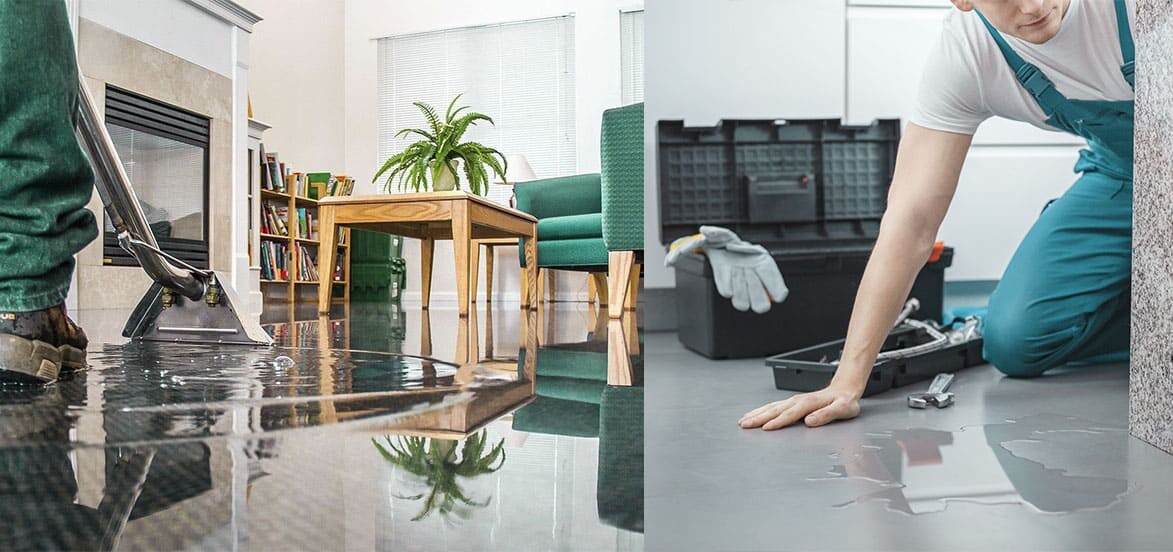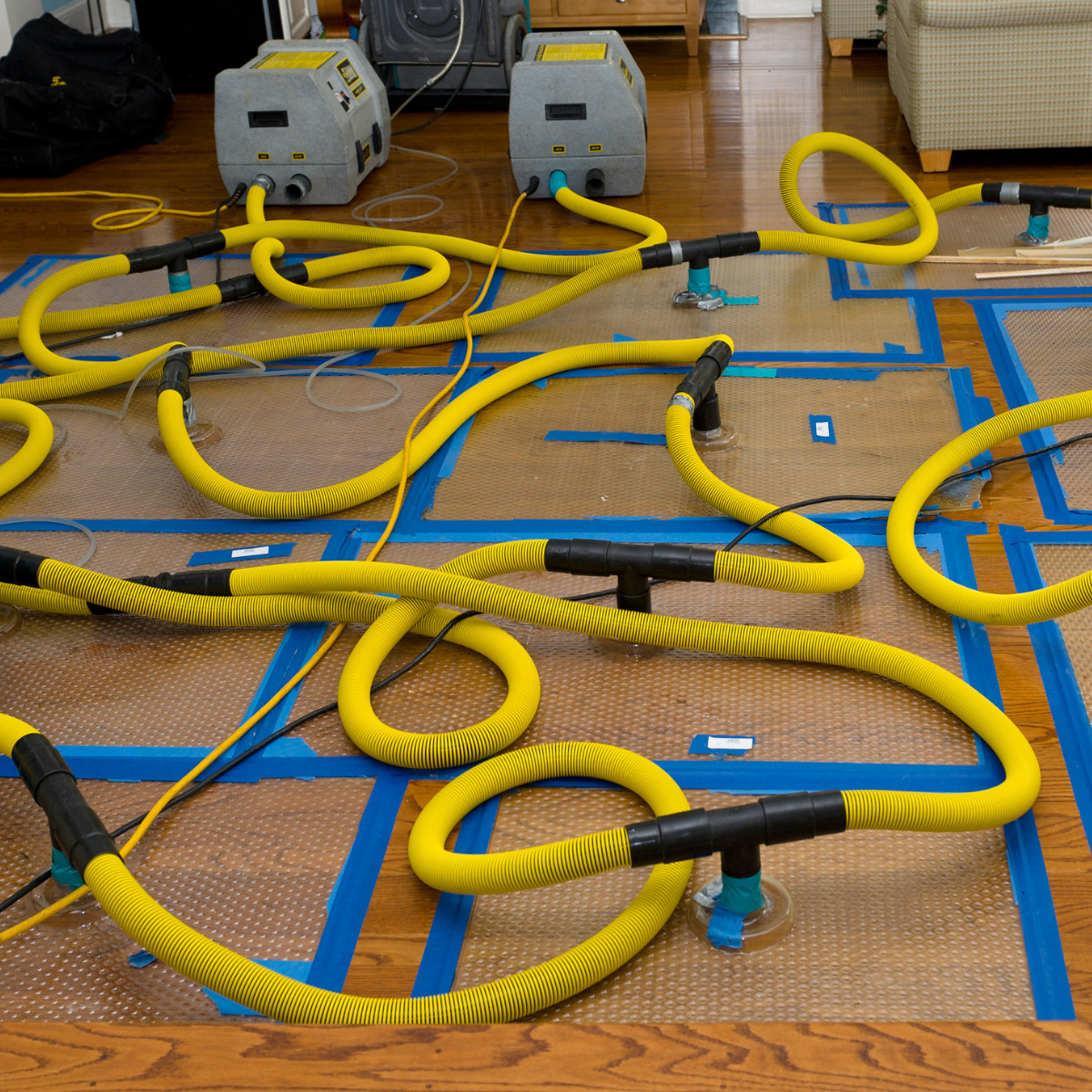A detailed guide to choosing the right Flood Cleanup Services provider
Water Damage Restoration 101: Understanding the Process and Expense
Water damage can strike suddenly, leaving homeowners in a state of complication. Understanding the reconstruction process is crucial for effective healing. From assessing the damage to choosing the best company, each action influences the general end result and cost. Aspects such as the sort of water damage and urgency also play a significant duty. What are the particular techniques utilized in restoration, and how can one plan for possible expenses?
Sorts Of Water Damage

Initial Assessment and Examination

Water Removal Methods
Adhering to the preliminary analysis, effective water extraction methods are utilized to reduce damage and stop additional issues. These methods include making use of customized devices such as industrial-grade vacuum cleaners and completely submersible pumps - Mold Remediation After Water Damage. The option of technique depends on the volume of water existing and the type of products influenced. For standing water, completely submersible pumps are generally utilized for rapid elimination, while vacuum cleaners are suitable for removing water from rugs and upholstery. In addition, progressed approaches like water removal floor coverings may be utilized for hard-to-reach locations - Flood Cleanup Services. The goal is to get rid of as much water as feasible, lessening the capacity for mold and mildew growth and structural damage. Motivate and efficient water extraction is crucial in the total water damage repair process
Drying and Dehumidification Process
When the water extraction is full, the drying out and dehumidification process ends up being essential to recovering the damaged area. This stage normally uses industrial-grade dehumidifiers and air movers to efficiently reduce moisture degrees. The dehumidifiers draw in damp air, getting rid of excess moisture, while air movers flow air to speed up evaporation. Monitoring devices is commonly utilized to track humidity and temperature degrees, ensuring excellent drying problems. The period of this process can differ depending upon the extent of the water damage and ecological aspects. It is important to completely dry all influenced products, including walls, flooring, and furnishings, to avoid mold development and structural damage. Correct execution of this action is important for a successful restoration end result.
Cleansing and Sterilizing Afflicted Locations
A comprehensive first analysis and inspection of affected locations is vital to recognize contamination degrees as soon as the drying out process is complete. Water Damage Restoration. Reliable cleaning techniques and suitable products have to after that be used to remove debris and spots. Ultimately, sanitization and disinfection techniques are necessary to guarantee that damaging pathogens are gotten rid of, bring back the room to a secure problem
Preliminary Analysis and Inspection
Prior to starting any type of remediation initiatives, a detailed first analysis and assessment of the influenced areas are essential for reliable cleaning and disinfecting. This procedure includes determining the extent of water damage, identifying the source of the water intrusion, and reviewing the materials affected. Inspectors generally search for signs of mold development, structural stability issues, and damaged personal belongings. The evaluation also includes inspecting dampness degrees utilizing specialized equipment to assure no surprise water pockets stay, as these can bring about more problems. Documenting the findings is necessary for intending the following action in the remediation process. An in-depth preliminary analysis allows repair experts to develop a targeted method for efficient cleansing and sterilizing, ultimately lessening damage and health and wellness threats.
Cleaning Up Techniques and Products
Reliable cleaning and sanitizing of water-damaged locations call for a range of techniques and items tailored to the more info particular materials influenced. For permeable surface areas like drywall and carpeting, removal techniques are important to get rid of excess wetness, followed by deep cleansing with specialized detergents. Non-porous products such as tile or metal can be cleaned up utilizing commercial-grade cleansers that effectively get rid of contaminants. Vapor cleansing is one more effective technique, especially for carpetings and furniture, as it utilizes high temperatures to get rid of microorganisms and mold (Flood Cleanup Services). Furthermore, eco-friendly products are progressively prominent for their safety and effectiveness - Flood Cleanup Services. Inevitably, selecting the appropriate cleansing techniques and items not only guarantees prompt cleanliness however additionally aids in preventing additional damage and wellness threats linked with water invasion
Sanitization and Disinfection Methods
When addressing water damage, appropriate sanitization and sanitation techniques are vital to assure the security and health of the damaged environment. After preliminary cleansing, surface areas should be treated with proper disinfectants to get rid of microorganisms, mold and mildew, and microorganisms that grow in damp problems. Typical techniques include the usage of EPA-approved chemical disinfectants, which can be applied via spraying or wiping methods. In addition, ultraviolet (UV) light systems can efficiently disinfect locations by reducing the effects of microbes without rough chemicals. The selection of method usually depends upon the kind of materials impacted and the degree of contamination. Ultimately, extensive sanitization not only recovers a secure living area however additionally helps prevent future health and wellness risks associated with lingering wetness and mold and mildew growth.

Repairs and Restoration Options
Reviewing the damage brought on by water exposure is vital for identifying the ideal fixings and remediation options. Property owners may face different concerns, including harmed drywall, distorted floor covering, and compromised architectural components. Depending upon the extent of the damage, fixings might involve replacing areas of drywall, mounting brand-new floor covering, or strengthening structural beams. In cases of extreme damage, full replacement of affected products could be necessary. Additionally, expert restorers often suggest using moisture meters to examine surprise wetness levels prior to making a decision on the best course of activity. It is essential to act quickly to stop mold development and further wear and tear. Choosing the appropriate alternatives not just restores the residential property however likewise guarantees lasting safety and security and performance.
Factors Influencing Restoration Expenses

The level of water damage straight impacts the reconstruction costs house owners can expect to sustain. Factors such as the source of the water, the duration of exposure, and the afflicted materials significantly influence rates. Clean water damage from a damaged pipeline is normally much less pricey to restore compared to damage triggered by sewage. Furthermore, the level of contamination determines the demand for specialized cleansing and disposal services, better enhancing expenses. Geographical place also plays a function, as local labor rates and accessibility of repair services can vary. Lastly, the seriousness of the action impacts expenses; quicker interventions generally cause decrease overall expenses by protecting against additional damage. Recognizing these factors is crucial for homeowners when estimating repair prices.
The three key types of water damage are categorized based on contamination degrees: clean water, gray water, and black water. A complete preliminary analysis and examination are vital steps in the water damage remediation procedure. For standing water, completely submersible pumps are normally made use of for quick elimination, while vacuum cleaners are suitable for removing water from carpets and upholstery. The extent of water damage directly influences the repair costs house owners can anticipate to incur. Clean water damage from a damaged pipeline is typically much less costly to recover contrasted to damage created by sewer.